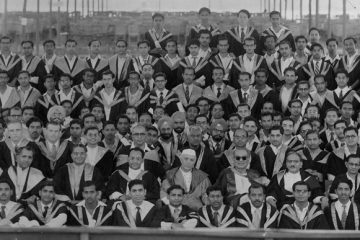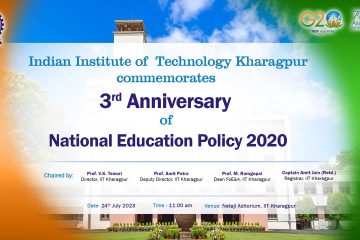How do airborne diseases spread?
What happens when two people in close proximity talk?
How exactly does the air exchange take place?
To answer all these questions and many more on the spread of the COVID-19 pathogen, Prof. Sandeep Saha of Aerospace Engineering, his students at the institute, and collaborators in CNRS, France, Imperial College, London, UK, and Princeton University, USA have performed a high-end simulation to study the transmission patterns of the COVID-19 pathogen by using the Paramshaakti Supercomputer.
The Simulation
The study, which has now been published in The Journal Of Fluid Mechanics, observed airflow and exchange between two unmasked individuals at proximity having a face-to-face conversation, through fog flow visualization experiments and direct numerical simulations of colliding respiratory jets mimicking a short conversation. It assesses the risk of transferring a high dose of the pathogen from an infected person to a susceptible person.
According to Prof. Saha, the simulation tries to understand the spread of the virus in a post-vaccination scenario. He also pointed out that this is a crude estimation and that it has the potential for deeper and more complex research in the future.
What did the simulation reveal?
The study revealed that the vertical offset between the mouths of the speakers to be an important parameter governing the propagation and evolution of the respiratory jets. A ‘blocking effect’ is observed at low offsets, which temporarily protects the susceptible speaker from the pathogen-loaded saliva droplets in the jet from the infected speaker. At large offsets, the interaction between the jets are minimum. In certain intermediate offsets, the jet entrainment and inhaled breath, assist the pathogen-containing jets to propagate towards the susceptible speaker’s mouth. The interaction of the respiratory jets, therefore, permits air exchange in a very short time to varying degrees depending upon the effectiveness of the blocking effect and jet entrainment.
Fighting the pandemic
The simulation was crucial in knowledge building about the spread of the virus. The results can be potentially used as part of public health guidelines to create awareness of the risks posed by unmasked conversations in close proximity. It reinforces the need for wearing masks as an effective means to minimize the spread of pathogens and thereby bringing down the infection rate.
The future of the study
Prof. Saha and his team intend to bring in more complexity in the simulation. They aim to analyze more complicated situations and bring the study closer to reality. The inclusion of viral load metrics would add dynamism to the study. He wants to further increase the scope of the study by exploring collaboration opportunities with epidemiologists and virologists.
Watch the simulation here.
Content Writer:- Arkaprabha Pal, Office of Alumni Affairs & Branding
Email: pal18arkaprabha@gmail.com



